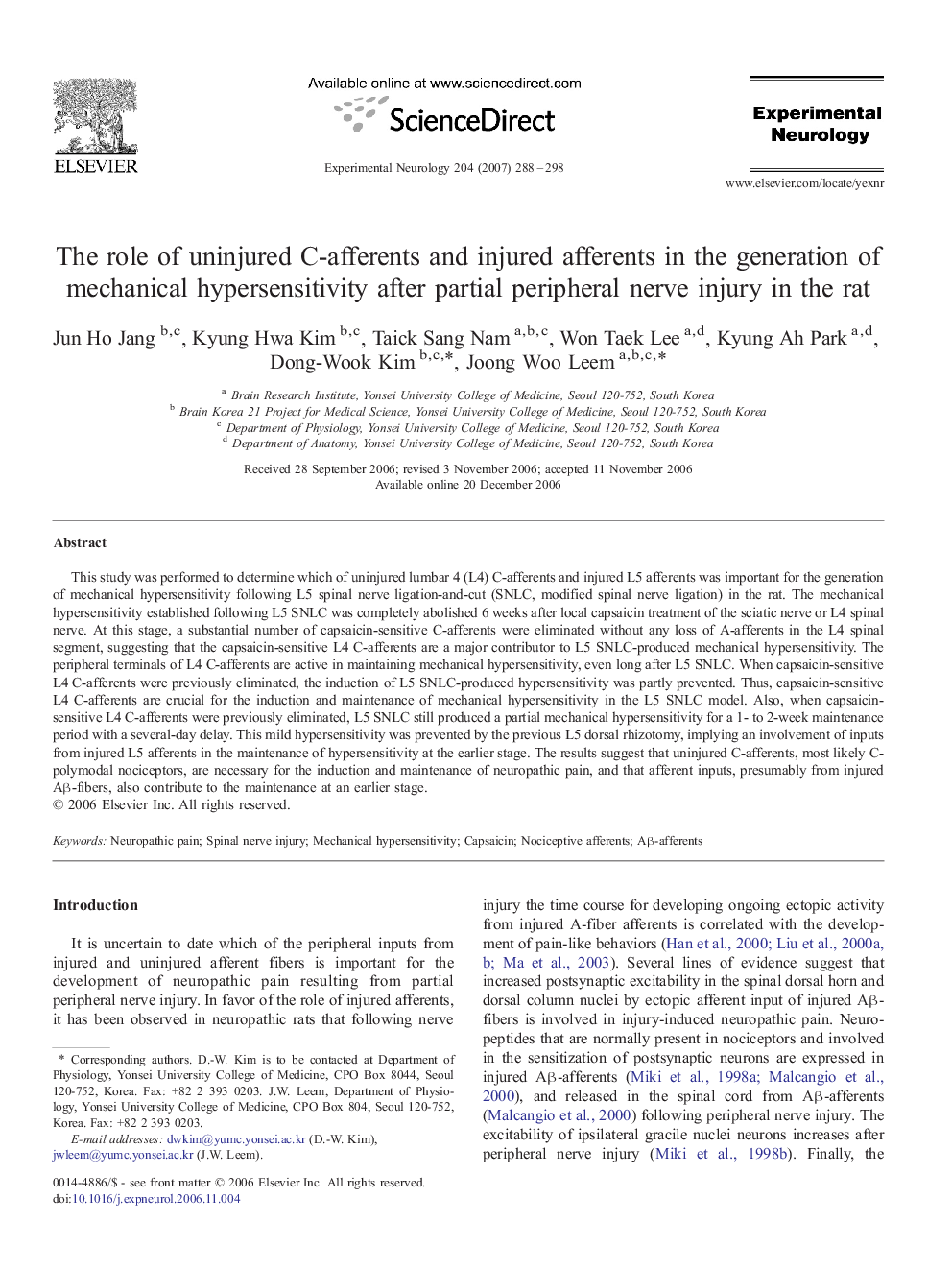| Article ID | Journal | Published Year | Pages | File Type |
|---|---|---|---|---|
| 3057183 | Experimental Neurology | 2007 | 11 Pages |
This study was performed to determine which of uninjured lumbar 4 (L4) C-afferents and injured L5 afferents was important for the generation of mechanical hypersensitivity following L5 spinal nerve ligation-and-cut (SNLC, modified spinal nerve ligation) in the rat. The mechanical hypersensitivity established following L5 SNLC was completely abolished 6 weeks after local capsaicin treatment of the sciatic nerve or L4 spinal nerve. At this stage, a substantial number of capsaicin-sensitive C-afferents were eliminated without any loss of A-afferents in the L4 spinal segment, suggesting that the capsaicin-sensitive L4 C-afferents are a major contributor to L5 SNLC-produced mechanical hypersensitivity. The peripheral terminals of L4 C-afferents are active in maintaining mechanical hypersensitivity, even long after L5 SNLC. When capsaicin-sensitive L4 C-afferents were previously eliminated, the induction of L5 SNLC-produced hypersensitivity was partly prevented. Thus, capsaicin-sensitive L4 C-afferents are crucial for the induction and maintenance of mechanical hypersensitivity in the L5 SNLC model. Also, when capsaicin-sensitive L4 C-afferents were previously eliminated, L5 SNLC still produced a partial mechanical hypersensitivity for a 1- to 2-week maintenance period with a several-day delay. This mild hypersensitivity was prevented by the previous L5 dorsal rhizotomy, implying an involvement of inputs from injured L5 afferents in the maintenance of hypersensitivity at the earlier stage. The results suggest that uninjured C-afferents, most likely C-polymodal nociceptors, are necessary for the induction and maintenance of neuropathic pain, and that afferent inputs, presumably from injured Aβ-fibers, also contribute to the maintenance at an earlier stage.
